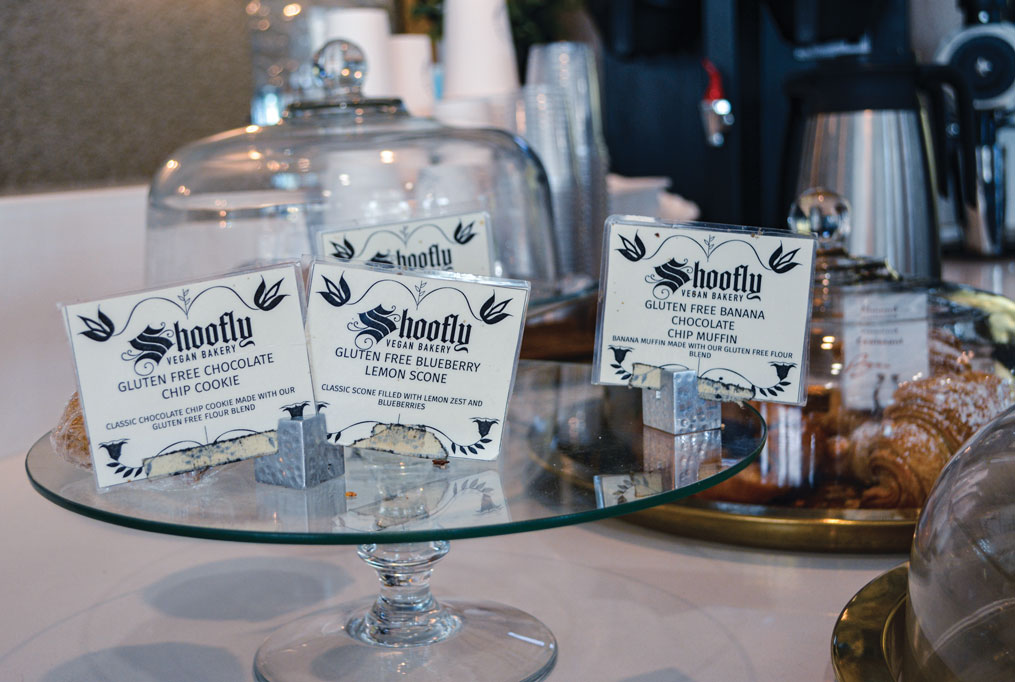[T]hirty-two million Americans have a food allergy. That means on any given day, you’re bound to serve a customer who may have a life-threatening allergy to milk, soy, nuts, gluten, or other standard fare in a typical café. While the burden typically falls on those who are diagnosed to disclose their allergies and be diligent when ordering, it behooves café owners to create a menu, meal-prep space, and staff training program all with food allergen safety in mind.
“A lot of business owners seem to think that being allergen-friendly is more something like a check mark to tick off … when in fact they should view it as really an opportunity to bring more people into their doors,” says Noreen Okarter, food allergen specialist and founder of Food Sitch, which provides coaching to individuals with food allergies and trains organizations to become food allergy-friendly. “If you cater to people with food allergies, your customer acquisition can only increase.”
So how exactly does a café assert itself as food allergy-friendly?
Okarter explains that one of the biggest risks in a café is cross-contact. She provides these tips for best avoiding cross-contact in your shop:
- Purple Utensils: Purple has become the de facto color for allergen safety in the food industry. When preparing food for someone with food allergies, use purple utensils, which will help to avoid cross-contact with allergens and can be used as a visual cue to your staff that there is a customer who has allergy or dietary concerns. The purple utensils should only be used for allergy purposes and should not be used for customers who do not have allergy or gluten-free concerns.
- Clean your work stations frequently: Be sure to keep your work station in the kitchen as clean as possible to avoid cross-contact and cross-contamination.
- Keep allergen-free foods away from other foods.
- Wash your hands: When preparing foods for people who have food allergies, it is critical to wash your hands to make sure there is no leftover residue from any allergens you may have touched.
- Allergy-free foods first: If you are preparing two meals, one with food allergens and one without, prepare the meal without food allergens first.
- If your café or coffee shop offers flavored coffees that have allergens (e.g. hazelnut coffee, pecan coffee), always use the same coffee pot for each type of coffee.
Okarter also notes that customer service is important in making those with food allergies feel safe eating and drinking in your café. Therefore, it is imperative to train your staff to know what items in your café may contain allergens and to always double-check labels.
Employees should also be open to answering, rather than dismissing, customers’ questions. If you’re at all uncertain about whether or not something may contain allergens, such as items not made in-house, you should transparently communicate that to your customer; Okarter says that it is fair to tell a customer you can’t guarantee something is allergy-free, rather than make a promise that could ultimately threaten someone’s life.
Cafés can also use visuals to help customers determine which menu items will be accessible to them. Consider putting icons on your menu that designate any food or drink item with nuts, dairy, gluten, etc., as well as symbols that represent vegan/vegetarian options.
While you can post signage asking customers to let the barista know if they have an allergy, you can take it a step further and make it regular practice for your staff to ask customers if they have a food allergy.
“It goes back to customer service—that willingness to listen to the customer and any concerns that they have is always well appreciated,” says Okarter. “If a company can have staff that is willing to help—that goes for not only people with food allergies, but anyone—that’s what keeps customers coming back.”
Learn more about Food Sitch and how to become food allergen-friendly at www.FoodSitch.com.








